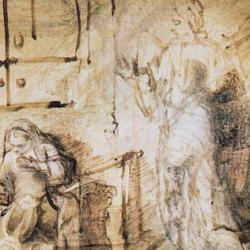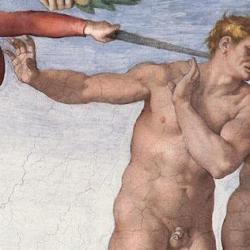In her contribution to Medieval Exegesis & Religious Difference, Nina Caputo analyzes Nahmanides’ interpretation of the sons of God/daughters of men passage in Genesis 6.
The notion that the passage was about angelic intercourse with humans was already current, but Nahmanides rejected it. He wrote, “The correct interpretation in my eyes is that Adam and his wife were called benei ha-elohim because they were made by His hands and He was their father, and they had no other father besides him. And Adam sired many sons. . . . These people who were the first born of a mother and a father were of great perfection from [their] height to [their] strength, since they were born in the image of their father. . . . Thus it was the case that all of the early men – Adam, Seth, Enosh – were called benei ha-elohim because these three men were in the image of God, but when the practice of idolatry began they became like [other] men who were weak and feeble” (quoted, 176).
As Caputo points out, Nahmanides sees the passage as “an essential part of the Noah story, not just a narrative digression.” Genesis is “the concluding chapter of the creation story involving distinctly human beings who were marked by the gift of God’s direct favor, not an isolated episode involving semidivine beings who have no bearing on the rest of human history” (177). On his interpretation, the flood was a judgment for “human wrongdoing” (180).
His interpretation also indicates that “the intensity of the family resemblance [to God] significantly diminished over time. . . . Human moral and physical health entered a period of decline at that point, which was only stabilized at the time of the flood” (179).















